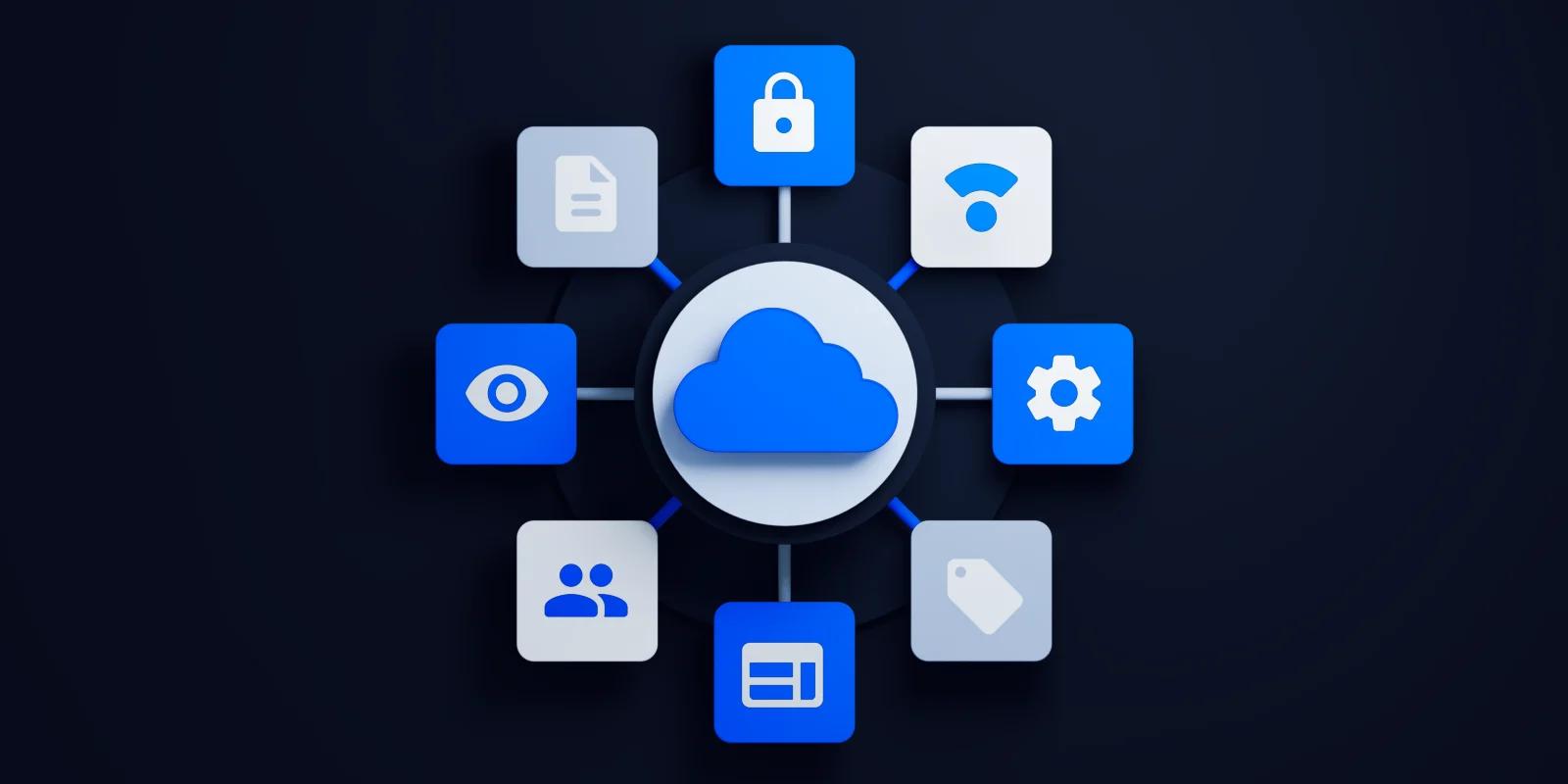Not every website can handle the demands of large-scale business operations. For enterprises with high traffic and complex systems, enterprise web development is the answer.
Whether you're an established corporation or a rapidly growing startup, balancing user experience, feature integration, and scalability is tough. Enterprise web development helps with top-notch performance, advanced features, and future growth.
This article will cover the key components and strategies that enable the best B2B websites to deliver high-performing, scalable, and flexible web solutions for their customers.
Key Takeaways
- Enterprise web development is tailored for mid to large-sized businesses, equipped to manage high traffic and integrate multiple functionalities for scalability.
- Strategic design and user experience strengthen brand identity, foster loyalty, and create a robust digital presence that stands out from competitors.
- It improves business operations by automating tasks and streamlining processes through customized features.
- Robust security measures and compliance protocols protect sensitive data, prevent legal issues, and enhance customer trust.
- Optimized user interface and responsive design enhance customer experience, increase retention, and drive revenue growth through improved conversion rates.

What is Enterprise Web Development?

Gatsby Contentful 1
Enterprise web development involves creating websites tailored specifically for mid-to-large-scale businesses.
These websites are designed to handle the high traffic volumes and complex demands of large enterprises, integrating advanced features and ensuring scalability and flexibility.
Unlike small-scale web properties, enterprise websites are built to represent brands effectively, showcase products and services, and engage target audiences. They offer a platform that supports seamless user experiences, high performance, and future growth.
The reality is that traditional, monolithic tech stacks lack the performance, scalability, and reliability needed when the organization’s stakes are so high.
Therefore, a composable approach to enterprise web development is crucial for effectively managing large-scale web operations and driving business success.
Benefits of Enterprise Web Development
Here are five ways enterprise web development benefits businesses looking to establish a strong online presence and drive growth:
1. Building for Scale and Adaptability
With the right technology and infrastructure, enterprise web development enables businesses to handle increasing volumes of traffic and adapt to changing needs.
By ensuring scalability and flexibility, businesses can grow and evolve without limitations. This allows companies to:
- Support Expanding Operations: Seamlessly meet the demands of an expanding customer base and increasing business operations.
- Adapt to Market Changes: Quickly adjust website functionality and features to align with shifting market trends or consumer preference
2. Fortifying an Enterprise-grade Brand
Strategic design, branding elements, and user experience optimization are key aspects of enterprise web development. By effectively representing brand image and values, enterprise websites:
- Build Trust and Credibility: Provide a consistent and professional brand image that instills confidence in customers.
- Strengthen Brand Loyalty: Deliver personalized user experiences that resonate with the target audience, fostering brand loyalty.
- Differentiate from Competitors: Highlight unique selling points that distinguish the brand from competitors.
3. Making Operations Run Smoother
Enterprise web development integrates customized features and functionalities to streamline internal processes, automate tasks, and enhance collaboration. This leads to:
- Increased Productivity: Automated workflows reduce manual tasks, allowing teams to focus on strategic initiatives.
- Cost Savings: Efficient operations reduce labor costs and minimize resource wastage.
- Enhanced Collaboration: Centralized data and integrated tools improve cross-team collaboration.
4. Strengthening Data Security and Compliance
In 2023, 353.02 million people were affected by cybersecurity breaches, underscoring the importance of data security and compliance.
Enterprise web development ensures the implementation of robust security measures, such as:
- Encryption and Secure Authentication Protocols: Protect sensitive business and customer data.
- Access Controls and Regular Security Updates: Prevent unauthorized access and maintain data integrity.
- Regulatory Compliance: Ensure adherence to industry standards like GDPR, CCPA, and HIPAA.
5. Boosting Customer Experience and Revenue
Enterprise web development focuses on optimizing user interface, navigation, and overall website performance.
By leveraging responsive design, well-executed mobile navigation menus, and compelling product pages, businesses can:
- Enhance Accessibility: 74% of online users will return to a website that is mobile-friendly. Create user-friendly, mobile-responsive websites that attract and retain more customers.
- Increase Conversion Rates: Deliver seamless navigation and personalized content that leads to higher conversion rates.
- Drive Revenue Growth: Improved user experience results in increased customer satisfaction and revenue growth.
Key Features of Enterprise Web Solutions
Enterprise web solutions offer a range of key features that empower businesses to optimize their operations and provide an exceptional user experience. These include:
- Comprehensive Integration Capabilities: Seamless integration with external systems like CRM software, payment gateways, and inventory management tools through headless CMS enables data synchronization and centralized management for improved productivity.
- High-Level Security Features: SSL encryption, firewalls, and intrusion detection systems ensure data confidentiality. Secure user authentication, access controls, and regular security updates maintain website integrity.
- Customization and User Experience: Tailor websites with custom designs, personalized content, and intuitive interfaces for a seamless, engaging user journey.

Types of Enterprise Website Architectures
Choosing the right architecture for your enterprise website can feel like picking a needle from a haystack. But fear not, understanding the types of architectures available can help you make an informed decision.
Monolithic Architecture
This traditional model involves building a single, unified system where all components are interconnected. It's like a one-stop-shop for your website needs but can become cumbersome as your business scales.
- Pros: Simplicity in initial setup, easier to manage for small teams.
- Cons: Limited scalability, challenging to update or modify without affecting the entire system.
Composable Architecture
Welcome to the future of web design. Composable architecture allows you to pick and choose the best tools and services for each part of your website, creating a flexible, scalable system that grows with your business.
- Pros: Highly scalable, allows for quick updates, and easy integration with new technologies.
- Cons: Requires more initial planning and coordination.
Headless CMS
A headless CMS, like Contentful, decouples the front-end and back-end of your website, offering unmatched flexibility and performance. Think of it as giving your website a turbo boost.
- Pros: Faster content delivery, greater flexibility in design and development.
- Cons: Can be more complex to implement and manage.
Differences Between Enterprise Websites, Web Apps, and Software
While enterprise websites, web apps, and software share similarities, they have distinct characteristics that set them apart.
These differences are crucial for businesses to determine the most suitable solution for their needs, target audience, and unique requirements.
Enterprise Websites
Enterprise websites primarily focus on providing information, promoting the brand, and engaging the target audience. They are designed to showcase products and services, provide relevant content, and facilitate customer interaction.
Enterprise websites serve as an online platform for businesses to establish their brand presence, communicate their values, and attract potential customers.
Enterprise Web Apps
Web apps offer interactive functionalities and are often built for specific tasks or workflows. They provide a more dynamic and engaging experience and are designed to perform specific functions or processes.
Accessed through a web browser, they do not require installation or download. They often utilize complex user interfaces and backend systems to deliver specific functionalities, such as online shopping, project management, or collaboration tools.
Enterprise Software
Software refers to comprehensive applications designed for specific business needs. It includes robust functionalities, advanced features, and comprehensive solutions for complex business processes.
Software applications are typically installed on local machines or servers and may require licensing or subscription. They are designed for specific requirements, such as accounting, customer relationship management (CRM), or enterprise resource planning (ERP).
The Enterprise Web Development Tech Stack

What is a cloud-based headless CMS_.png
In enterprise web development, a diverse array of technologies and tools are combined to construct scalable websites.
Composable Architecture: A Modern Approach to Enterprise Web Development
Modern enterprise development increasingly adopts a composable architecture. This approach utilizes separate, interchangeable components that function independently but can be seamlessly integrated.
Such modularity enables organizations to adapt their systems by adding, replacing, or upgrading specific components without disrupting the overall infrastructure, fostering agility and innovation to swiftly respond to technological changes and market demands.
Key Components of the Enterprise Web Development Tech Stack
Here are some key features of the enterprise web development tech stack:
- Front-end Frameworks: Front-end frameworks like Next.js and Gatsby.js provide developers with efficient tools and libraries to create responsive and dynamic web pages.
- Back-ends: The back-end is the underlying infrastructure that powers enterprise websites. It handles data storage, processing, and retrieval, ensuring the website's functionality. They provide robust server-side capabilities and enable efficient data management and integration with other systems.
- Content Management Systems (CMS): Enterprise content management systems make it easier to manage, create, and publish content. Popular Enterprise CMS options offer extensive customization and a range of plugins.
- Hosting Environments: Hosting environments refer to the server infrastructure that hosts and serves enterprise websites. Different options are available, including shared hosting, virtual private servers (VPS), and cloud hosting services.
- Databases: Databases are crucial for storing and organizing the data used by enterprise websites. They offer scalable solutions for managing large volumes of data and ensuring data integrity.
- Website Tools: Analytics tools like Google Analytics provide valuable insights into website performance, user behavior, and conversion rates. CRMs help manage customer data, interactions, and sales processes. A/B testing platforms like Mutiny test different versions of their websites to optimize conversion rates and user engagement.
- Content Delivery Networks (CDN): Content delivery networks improve website performance by caching and delivering content from servers located closer to the user's geographic location. They help optimize website loading speed, reduce latency, and ensure a better user experience.
- Security: Critical for protecting sensitive data, measures like SSL certificates, firewalls, and encryption help mitigate risks and protect against cyber threats, complemented by regular audits and updates.

Do You Need Enterprise Web Development Services?
When it comes to determining if your business needs enterprise web development, there are a few key factors to consider.
By evaluating your specific needs and growth potential, assessing your technology requirements, and understanding the long-term strategic benefits, you can make an informed decision.
- Evaluating Business Needs and Scale: Consider the size and complexity of your business operations and the anticipated scale of your website. If you need a highly scalable and customizable site to support growth, enterprise web development may be a valuable investment, providing the infrastructure to meet expanding needs
- Assessing Technology Requirements: Conduct technical planning that takes into account required features, functionalities, integration capabilities, security, and compliance needs. If your business requires advanced technology solutions and robust security measures, enterprise web development can help implement cutting-edge technologies and ensure compliance.
- Long-Term Strategic Benefits: Enterprise web development can strengthen your brand, enhance customer experience, improve operational efficiency, and drive revenue growth. It also provides a good foundation for other elements of improvement, like SEO for enterprises. Investing in it lays the foundation for long-term success and a competitive advantage in the digital landscape.
Enterprise Web Development Has Its Challenges Too
There are several challenges that corporations often face when it comes to enterprise web development. These challenges require careful consideration and strategic planning to overcome.
- Addressing Complex User Requirements: Large-scale businesses have diverse user segments with varying needs. Thorough planning, user research, and experience design help tailor websites to meet specific requirements, enhance user experience, and drive customer satisfaction.
- Ensuring Data Security and Privacy: Data security and privacy are critical concerns. Robust security measures like encryption and secure authentication protocols help comply with industry regulations, protect sensitive information, and build customer trust.
- Overcoming Cross-Platform Compatibility Issues: A wide range of devices and browsers makes cross-platform compatibility challenging. Thorough testing and optimization ensure the website functions consistently across all platforms, providing a seamless user experience and increasing satisfaction.
Best Practices in Enterprise Web Development
Strategic Planning and Phased Implementation
Strategic planning is crucial in enterprise web development. It involves setting clear goals and creating a detailed roadmap, which outlines the necessary resources, technology requirements, and timelines.
This structured approach helps streamline the development process and ensures effective resource management. Implementing the project in phases allows for better control and flexibility, prioritizing essential features first and gradually introducing more complex ones.
This method facilitates continuous feedback and iteration, ensuring the final product aligns with business goals and user expectations.
Continuous Testing and Quality Assurance
Regular testing and quality assurance are vital to maintaining high standards in enterprise web development. Testing should cover various scenarios to confirm the website’s functionality across different devices and browsers, ensuring a seamless user experience.
Quality assurance involves adhering to coding standards, conducting regular code reviews, and incorporating accessibility measures. These practices help identify and resolve issues promptly, maintaining the reliability and performance of the website.
Prioritizing Modular Design
Enterprise web development isn't complete without a scalable design system. Adopting a modular design allows your developers to take a methodical approach to building pages and implementing new UI elements.
Looking for Web Development for Your Enterprise?
As you’ve seen, enterprise web development plays a crucial role in managing large-scale web operations and driving business growth.
Investing in enterprise web development allows businesses to build modern, scalable, and secure websites that enhance their brand presence and optimize operational efficiency.
With the right approach and best practices in place, enterprise web development enables you to create websites that cater to the complexity and demands of your enterprise, ensuring that they can handle high volumes of traffic, integrate various features, and adapt to your evolving needs.
Here at Webstacks, we help many leaders in tech level up their online presence through next-gen solutions for enterprise web development and design.
If you want to learn more about enterprise web development, feel free to reach out to us!






